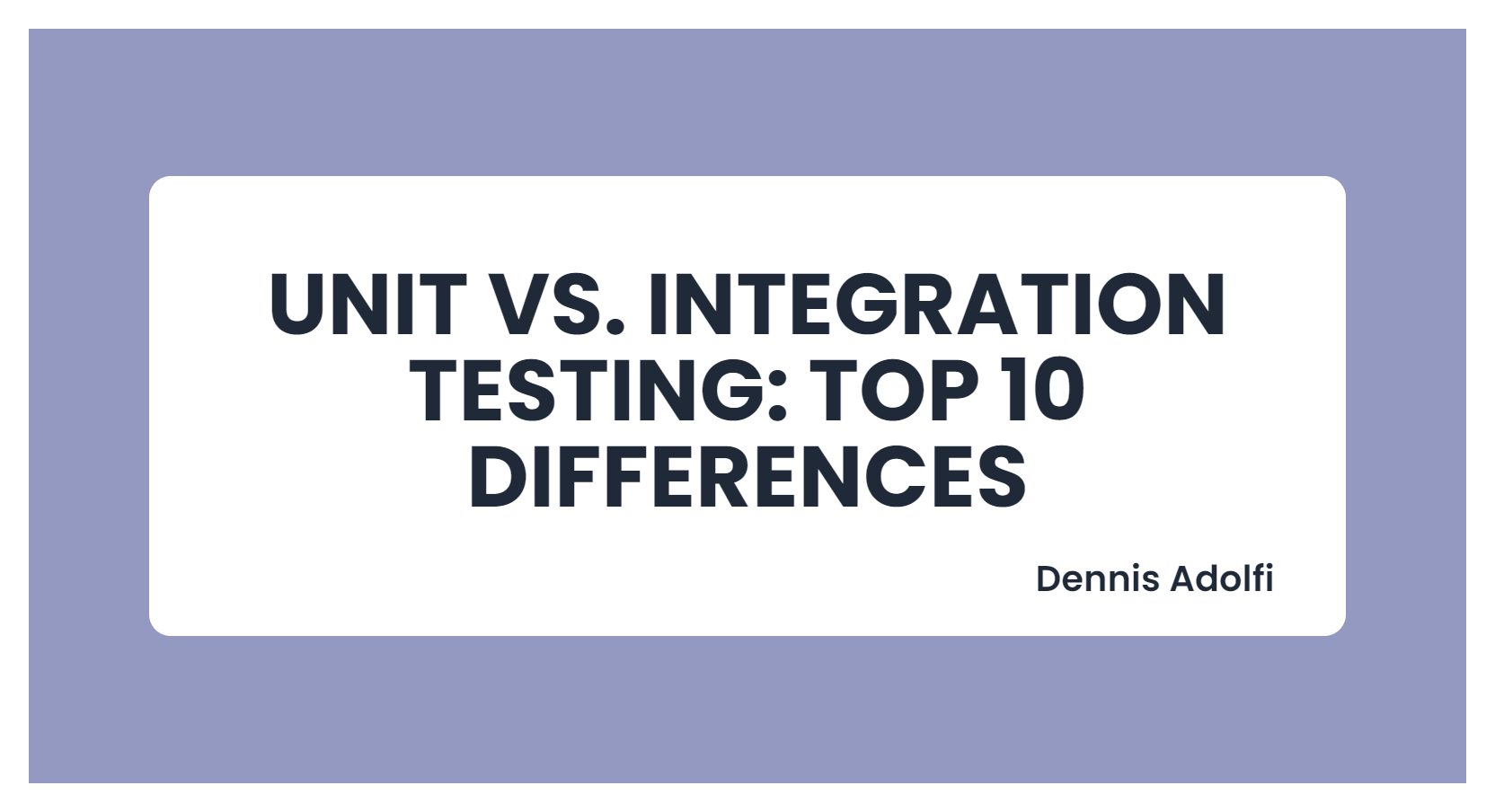Unit vs. Integration Testing

Testing is an essential part of all software development. It helps identify defects and ensure that your software works as you’d expect it to. There are many different types of testing but the two main ones are unit and integration testing.
Both these types of testing are important and have their place in the software development process. However these types of tests doesn’t necessarily have to look very different and it might be hard to spot the difference at first glance for the untrained eye. That's why in this post I’ll share 10 essential differences between unit and integration testing.
Top 10 differences between Unit and Integration Testing:
- Scope:
Unit testing focuses on testing individual units or components of a software system in isolation. Integration testing, on the other hand, focuses on testing the interaction between different components of a software system. - Dependencies:
Unit testing involves testing code in isolation, which means that external dependencies are replaced with test doubles, such as mocks or stubs. Integration testing, on the other hand, involves testing the interaction between components, which means that dependencies cannot be entirely eliminated. - Purpose:
The purpose of unit testing is to ensure that individual units of code work as expected. The purpose of integration testing is to ensure that different components of a software system work together as expected. - Environmental:
Unit testing is typically done in a local development environment or in a continuous integration (CI) environment. Integration testing is typically done in a dedicated integration testing environment or in a staging environment that closely resembles the production environment. - Data:
Unit testing uses test data that is specific to the unit being tested. Integration testing uses test data that simulates real-world scenarios and covers the interaction between different components. - Automation:
Unit testing is highly automated and can be run on a developer's machine or in a CI environment. Integration testing is also highly automated, but it requires more complex setup and infrastructure to simulate the production environment. - Speed:
Unit tests are typically faster than integration tests because they test smaller pieces of code in isolation. However, integration tests can catch defects that may not be caught by unit tests, which can ultimately save time in the long run. - Debugging:
Unit tests are easier to debug because they test individual units of code in isolation. Integration tests are more complex to debug because they involve multiple components and dependencies. - Maintenance:
Unit tests are easier to maintain because they test individual units of code in isolation, which means that changes to other components do not affect the test results. Integration tests are more difficult to maintain because changes to one component can affect the test results for other components. - Confidence:
Unit testing provides confidence that individual units of code work as expected. Integration testing provides confidence that the software system as a whole works as expected and that individual components interact correctly with each other.
Conclusion:
Both unit and integration testing are important parts of the software development process. While unit testing focuses on individual units of code, integration testing focuses on the interaction between different components.
-"By understanding the essential differences between unit and integration testing, we as developers can make better decisions about when and how to use each type of testing to ensure the quality and reliability of our software."
If you want to read more and see examples of Integration Testing in action, see this related article:
Cheers friends! ❤️
